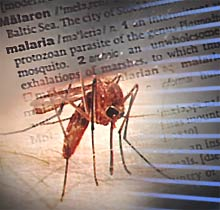
Implications of Climate Change on Malaria http://www.brown.edu/Research/EnvStudies_Theses/full9900/creid/

Malaria causes 300 million new infections and 1 million deaths a year (WHO, 1999). Malaria is the second most fatal communicable disease and is a public health problem in 90 countries in the world, where 40% of the human population live (WHO, 1998).
Malaria is one of the vector-borne diseases that is expected to be most sensitive to long-term environmental change (WHO, 1999).
Temperature, precipitation, relative humidity, and wind are the four main climatic factors that affect malaria transmission and upon which the predictions of the effects of climate change on malaria are based. These relationships can be best understood in relation to the malaria life cycle. There are maximum, minimum and optimum temperatures for the development and survival of both the parasite and the vector of malaria, and increases in temperature tend to show increases in feeding and egg laying frequency of the vector. The amount of precipitation affects the amount of surface water within which the malaria vectors, different member of the Anopheles family, can breed. Relative humidity limits vector survival, and although strong winds hinder biting by Anopheline mosquitoes and also allow for the distribution of the vector further than its own short flight span.
Changes in temperature, rainfall, and relative humidity due to anthropogenic climate change are expected to influence malaria directly by modifying the behavior and geographical distribution of malaria vectors and by changing the length of the life cycle of the parasite (Martens et al., 1995).
C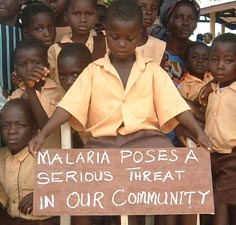 limate
change is also expected to affect malaria indirectly by changing
ecological relationships that are important to the organisms involved
in malaria transmission (the vector, parasite, and host).
limate
change is also expected to affect malaria indirectly by changing
ecological relationships that are important to the organisms involved
in malaria transmission (the vector, parasite, and host).
T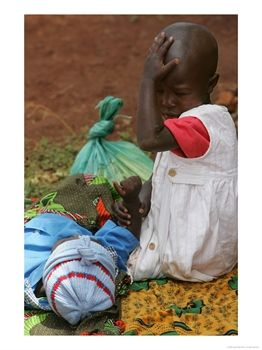 he
disease is endemic in some 90 countries in Africa, Asia, Oceania and
Central and South America and in the island of Hispaniola in the
Carribean. Throughout the world two billion people or 40 % of the
world population is at risk. It is estimated that 300-500 million
cases occur each year and in Africa alone more than one million
children die from malaria tropica each year.
he
disease is endemic in some 90 countries in Africa, Asia, Oceania and
Central and South America and in the island of Hispaniola in the
Carribean. Throughout the world two billion people or 40 % of the
world population is at risk. It is estimated that 300-500 million
cases occur each year and in Africa alone more than one million
children die from malaria tropica each year.
http://web.worldbank.org/WBSITE/EXTERNAL/NEWS/0,,contentMDK:20459135
A young boy holds his sisters hand as she waits for treatment against malaria at the new hospital build by the Millennium Village Project,
Tuesday, February 28, 2006.
http://www.cdc.gov/malaria/images
A13_s4_2
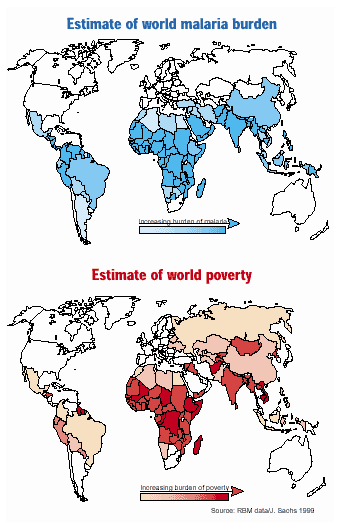
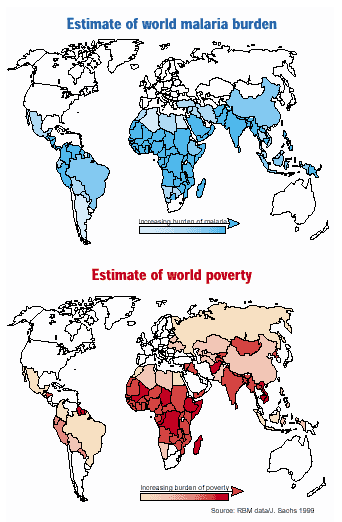
TEMPERATURE AFFECTS MALARIA INCREASES
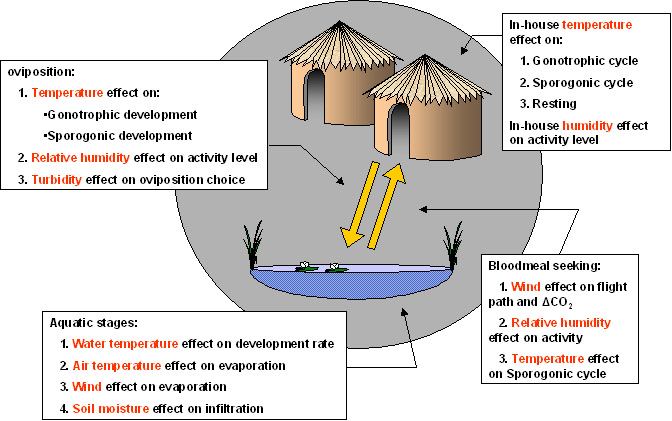
Malaria is endemic to the poorest countries in the world, mainly in tropical and subtropical regions of Africa, Asia and the Americas. An estimated 350 million to 500 million clinical malaria cases and more than one million malaria deaths occur each year, the vast majority of which are in sub-Saharan Africa.
More than 80% of malaria deaths occur in Sub-Saharan Africa and the large majority of these are in children younger than five years of age.
A13_s4_3
The Effects of Climate Change on Worldwide Malaria Distribution
Changes in Malaria Potential Transmission
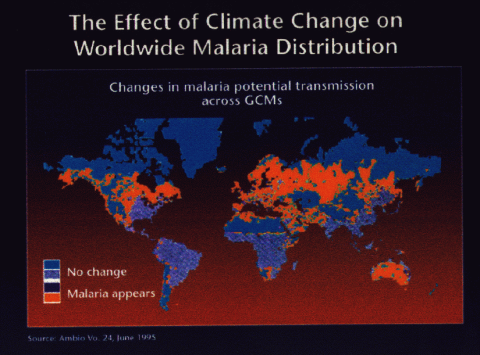
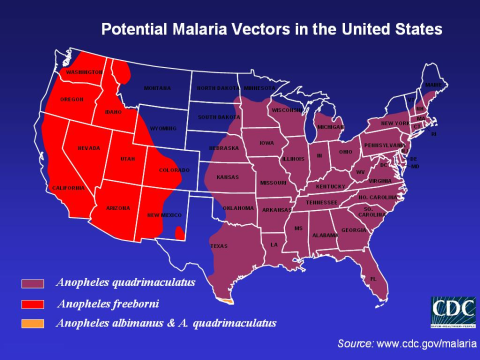
http://www.jisao.washington.edu/lectures/wallace1098/malaria.gif
A13_s4_4